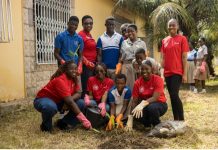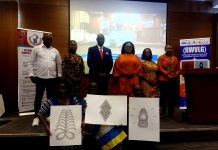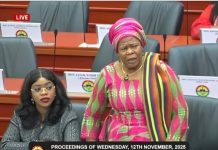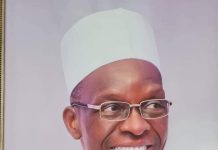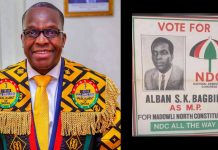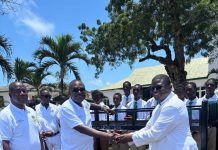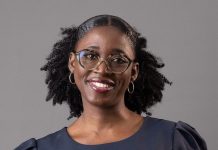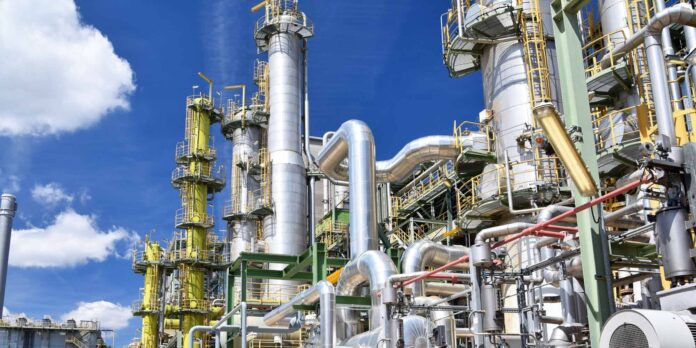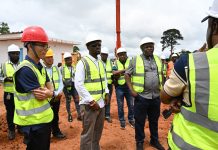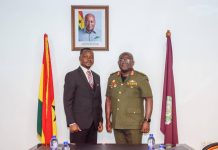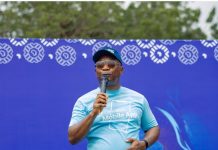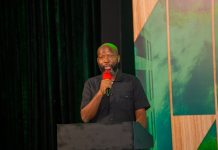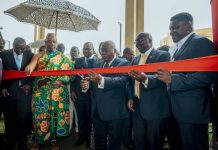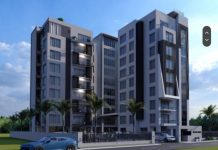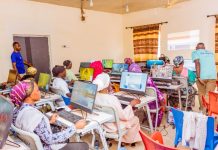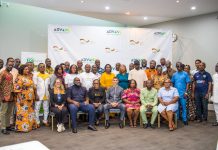JOHANNESBURG, South Africa, May 5, 2022/ — With making energy poverty history by 2030 representing a central theme at the continent’s premier energy event, African Energy Week (AEW) 2022, the African Energy Chamber (AEC) spoke with Stephen Dihwa, Executive Director, Coordination Center, of the South African Power Pool, in an exclusive interview, about the role of Africa’s power pools, energy addition rather than transition and the possibility of a single market for electricity in Africa.
Addressing energy poverty is central to AEW 2022. What is your vision for the next five years to make this a reality?
We generally operate within the generation and transmission level but because our members are power utilities, those utilities have a mandate in terms of access to electricity. Our drive is to ensure every member has adequate electricity supply to meet demand and to make sure that electricity is lent at affordable prices.
We want to make sure the grid is reliable and that there is a balance in terms of supply and demand. Our mandate is to ensure that there is cooperation at operations level, planning level, environmental and sustainability levels as well as electricity trade.
Do you play a role in promoting power availability expansion?
Yes we do. On the planning side, one of the things we do is coordinate the development of a regional transmission and generation masterplan. The process used to develop that is to collect all of the national plans and optimize them. We look at the regional level and see what the sequence of generational projects is that should be developed to meet the needs of everybody.
Within that, there is a need for the promotion of trading that may need to take place. Also, we have a project advisory unit which is being funded by the World Bank whose main role is to ensure that our priority transmission and generation projects are bankable. They coordinate feasibility studies, the structuring of projects and discuss with potential financiers so that those projects can come into fruition.
What is the matrix of energy sources for power generation used within the southern African region and do you see shifts in trends in that regard?
Zambia is very hydropower dominated, Zimbabwe is both hydro and coal fired, Mozambique is hydro dominated, Botswana is thermal, Namibia has variable hydro as well as solar and now they have wind. We have been tracking the percentage contribution of renewables and are seeing a reduction in the percentage of coal as we see more renewables coming onboard. Many people are aware of what has been done in South Africa to bring renewables on board.
Zambia has also had a program with some good quantities of renewables, Namibia has also done well, and we are seeing Botswana going into the market looking for players to bring in wind and concentrated solar. What is happening is coal is coming out naturally. We have old plants that come off because they are old and are being decommissioned. What we do not see is the life extension of coal plants. This is why we talk about addition.
How does integrating Africa’s power grids contribute to reducing energy poverty?
How this helps reduce energy poverty is by ensuring that the countries can have access to reliable electricity at reduced prices. The whole process of regional integration looks at each country getting the cheapest energy at that particular time, and the implication is that the country should be able to defer investments in certain generations because there is cheaper energy coming from its neighbors. That deferred capital can be used to invest elsewhere in your economy such as off-grid interventions.
Do you envision a fully integrated African energy grid such as an African power pool?
It is not only talking about envisioning it, we are part of the process trying to actualize it. The first stage for us is that we have members part of SAPP, but who are also part of the East African Power Pool (EAPP) such as Tanzania and the DRC.
Tanzania is in the process of being connected to the EAPP through Kenya. Whether we like it or not, in the next three years, Tanzania will be connected to both the SAPP and the EAPP and that will result in SAPP being interconnected to EAPP.
We have already carried out studies to see what that means from a technical point of view, an institutional point of view, a legal point of view and right now, we are moving in those various processes to make that happen.
We continue to hold commission meetings between the SAPP and EAPP to see what is required to make sure these two huge systems can be interconnected without issues, ensuring there are agreements in place for trade.
Secondly, the African Union, through the AUDA-NEPAD facility, has engaged a consultant for a study on the Continental Power System Master Plan.
We have already recommended that the approach for this masterplan should not look at connecting countries one after the other but focus on interconnecting power pools. This happens from an enabling point of view, getting countries located on the edges of those power pools connected to one another.
This study is being done while work is being developed on the African single electricity market. Work is being done to see what needs to be in place, what market structures need to be in place and what are the regulatory issues that need to be looked at in advance for that to take place. SAPP is a participant in that study. Sometime next year we would have completed those studies. I believe we can connect all African countries in the next fives years.
About AEW 2022:
AEW 2022 is the AEC’s annual conference, exhibition and networking event. AEW 2022 unites African energy stakeholders with investors and international partners to drive industry growth and development and promote Africa as the destination for energy investments.
Key organizations such as the African Petroleum Producers Organization, as well as African heavyweights including Equatorial Guinea and Nigeria, have partnered with AEW, strengthening the role the event will play in Africa’s energy future.



